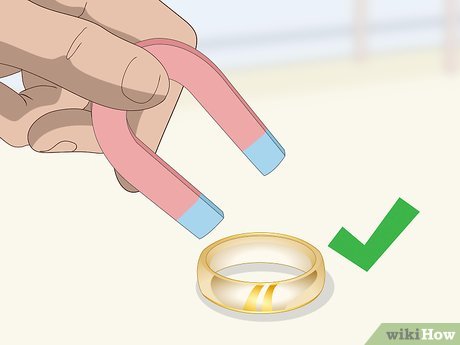The Ultimate Guide to Testing Gold at Home
Gold is a precious metal that has been a symbol of wealth for centuries. Whether you have inherited gold jewelry or purchased it yourself, it's important to know how to test its authenticity. In this article, we will provide you with the ultimate guide to testing gold at home.

Why It's Important to Test Gold
Testing your gold is crucial to ensure that you are not being scammed or deceived. Unfortunately, there are many fake gold pieces in circulation, and without testing, you may be fooled into purchasing them.
Additionally, testing your gold can help you determine its purity level, which is vital if you plan on selling it in the future. This is because the higher the purity level, the more valuable the gold is.
Furthermore, knowing the purity level of your gold can also help you make informed decisions about how to care for it. Pure gold is soft and malleable, so it is not suitable for jewelry or other items that will experience wear and tear. However, gold alloys with other metals can be more durable and practical for everyday use.
How to Prepare Your Testing Area
Preparing your testing area is crucial for accurate and safe testing of gold at home. Begin by selecting a well-lit area with good ventilation to reduce any fumes from chemicals used in the testing process. The testing area should be free from any distractions and kept clean and organized to prevent any contamination of the gold being tested.
Next, gather all necessary testing equipment such as a testing stone, testing needles, and testing solutions. Ensure that all equipment is clean and free from any residue from previous tests. Make sure to follow the instructions on the testing solutions and handle them with care.
It is also important to have protective gear such as gloves, goggles, and a mask to prevent any direct contact with the testing solutions or any fumes that may be produced during testing.
By properly preparing your testing area, you can ensure accurate and safe testing of your gold at home. Remember to always follow the instructions carefully and dispose of any testing solutions and materials properly.


Interpreting Your Test Results
After conducting your tests on the gold you want to examine, it's crucial to understand how to interpret the results. If you used the acid test, you should be able to determine the gold's karat by noting which acid caused a reaction. If the gold reacted to the 10K acid but not the 14K acid, for instance, then your gold is likely 10 karats.
If you used the magnet test, you should know that pure gold is not magnetic. If your gold was attracted to the magnet, then it contains other metals, and its purity is less than 24K.
For the specific gravity test, you should compare the results you obtained to the known density of gold (19.3 g/cm³). If the specific gravity of your gold is between 18-19 g/cm³, then it's likely to be 22K or 23K gold. If it's between 14-15 g/cm³, then it could be 10K or 12K gold.
If you used the streak test, you should look for the color of the streak on the stone you used. If the streak is golden yellow, then your gold is likely pure. If it's a different color, then your gold contains other metals.
By properly interpreting your test results, you can determine the purity of your gold and make informed decisions about whether to buy, sell, or keep it.
Tips for Accurate Testing
1. Use the right testing kit: There are different testing kits for different types of gold. Make sure you use the appropriate kit for accurate results.
2. Clean the gold properly: Use a clean cloth to wipe any dirt or oil from the gold. This will help ensure accurate results.
3. Test a small portion of the gold: Testing a small portion of the gold will help you determine its purity without damaging the entire piece.
4. Follow the instructions carefully: Make sure you read and follow the instructions on the testing kit carefully to ensure accurate results.
5. Test multiple times: Test the gold multiple times to ensure consistent results.
By following these tips, you can ensure accurate testing results when testing gold at home.
What to Do if Your Gold Fails the Test
If your gold fails the test, don't panic. There are several reasons why this might happen, such as inaccurate testing methods or impurities in the gold. However, it's important to take the necessary steps to ensure that you're not dealing with fake or counterfeit gold.
First, double-check your testing methods and make sure you're following the correct procedures. If you're still unsure, consider taking your gold to a professional for testing. They'll have access to more advanced equipment and can provide a more accurate result.
If your gold is indeed fake, it's important to report it to the proper authorities, such as the Federal Trade Commission or local law enforcement. This will help prevent others from falling victim to the same scam.
In the future, be sure to purchase gold from reputable sources and always do your research before making a purchase. Remember, if a deal seems too good to be true, it probably is.
Gold IRA: Should You Open One To Save For Retirement?

